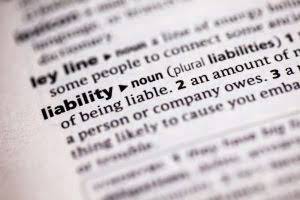
The accounting equation on the basis of a balance sheet can be calculated as. The assets of the business will increase by $12,000 as a result of acquiring the van (asset) but will also decrease by an equal amount due to the payment of cash (asset). The cash (asset) of the business will increase by $5,000 as will the amount representing the investment from Anushka as the owner of the business (capital). Notice that every transaction results in an equal effect to assets and liabilities plus capital.

In the accounting equation, every transaction will have a debit and credit entry, and the total debits (left side) will equal the total credits (right side). In other words, the accounting equation may be expressed as the accounting equation will always be “in balance”. On January 1, 2020, the business had $100,000 assets in terms of cash, $0 liabilities, and $100,000 owner’s equity.
Who Creates Journal Entries?
This observation tells us that accounting statements are important in investment and credit decisions, but they are not the sole source of information for making investment and credit decisions. The accounting equation plays a significant role as the foundation of the double-entry bookkeeping system. The primary aim of the double-entry system is to keep track of debits and credits and ensure that the sum of these always matches up to the company assets, a calculation carried out by the accounting equation. It is based on the idea that each transaction has an equal effect. It is used to transfer totals from books of prime entry into the nominal ledger. Every transaction is recorded twice so that the debit is balanced by a credit.

In order to make sure that the accounts of a company are balanced, the total assets must equal the sum of the total of all liabilities and owner’s equity. To see if everything is balanced, the totals are simply plugged in to the accounting equation. Once the math is done, if one side is equal to the other, then the accounts are balanced. Here are the different ways the basic accounting equation is used in real-life situations. The following examples also show the double entry practice that maintains the balance of the equation. Assets will always equal the sum of liabilities and owner’s equity.
What Are the Key Components in the Accounting Equation?
The purpose of this article is to consider the fundamentals of the accounting equation and to demonstrate how it works when applied to various transactions. If a journal entry is created where the debit and credit totals are not the same, this is called an unbalanced journal entry. If you attempt to enter an unbalanced journal entry into a computer accounting system, the error-checking controls in the software will likely reject the entry.

That is, each entry made on the debit side has a corresponding entry (or coverage) on the credit side. The accounting equation is the basic element of the balance sheet and the primary principle of accounting. It helps the company to prepare a balance sheet and see if the entire enterprise’s asset is equal to its liabilities and stockholder equity. The basic accounting formula highlights the calculation of the assets and the relationship of the three elements to each other. Total assets are total liabilities, and shareholder’s equity is added together.
What is the Basic Accounting Equation?
An accounting journal entry is the method used to enter an accounting transaction into the accounting records of a business. The accounting records are aggregated into the general ledger, or the journal entries may be recorded in a variety of sub-ledgers, which are later rolled up into the general ledger. This information is then used to construct financial statements as of the end of a reporting period. A company’s quarterly and annual reports are basically derived directly from the accounting equations used in bookkeeping practices. These equations, entered in a business’s general ledger, will provide the material that eventually makes up the foundation of a business’s financial statements.